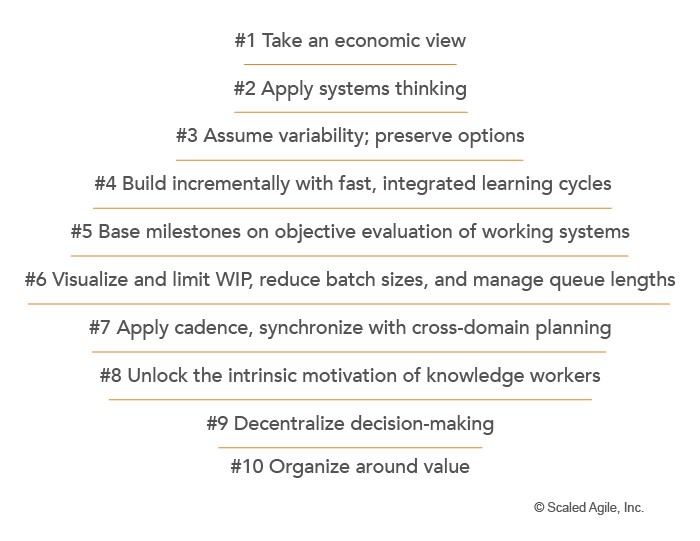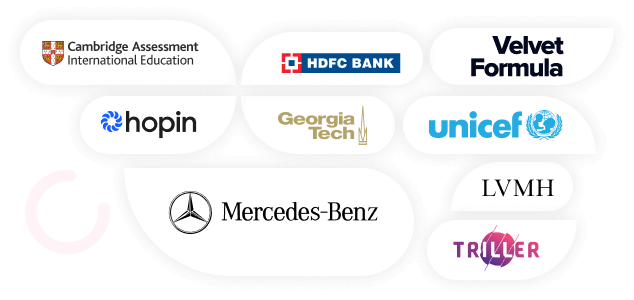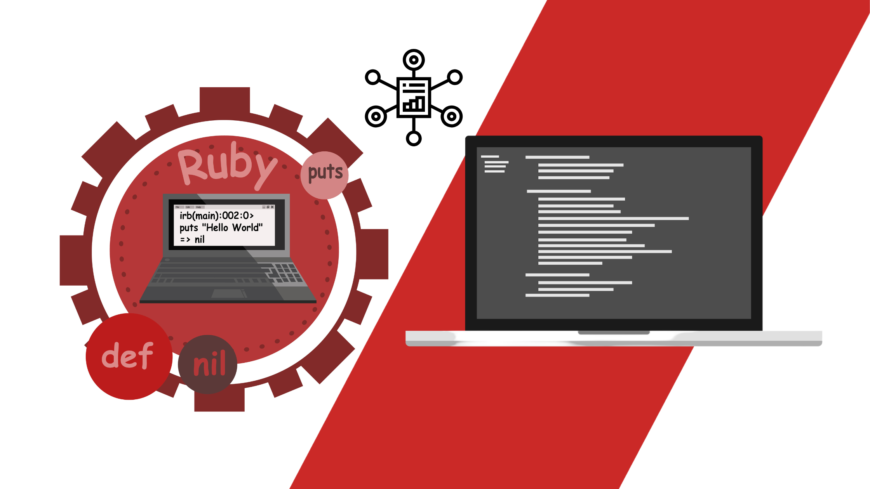Scaled agile frameworks are structured and well-supervised workflow patterns that allow enterprises to scale lean and agile practices. As a result, it has become popular among businesses to streamline workflow methodologies and reap benefits.
The novel idea of scaled agile frameworks improved alignment, collaboration, and delivery in a large number of teams. Today, more than 20,000 companies rely on scaled agile frameworks to caliber effective multi-team coordination.
But why is it an industry standard? And why choose a scaled agile framework? Rest assured, because this article covers all these aspects.
What is Scaled Agile Framework SAFe
A scaled agile framework is a powerful tool that helps enterprises scale their agile methodologies such as scrum, and kanban, and learn to develop, deliver, and service quality products faster.
In addition to this, it facilitates multi-team coordination for effective alignment, collaboration, and delivery among a large number of teams. The framework is best suited for complex systems, which require larger teams for projects, programs, and portfolios.
It keeps business agility high and speeds up the feedback process, which leads to higher engagement, increased productivity, and the production of quality products for customer satisfaction.
Why Scaled Agile Framework
The scaled agile framework has become the backbone of alignment across organizations because of its scalable characteristics.
Companies keep evolving; what they have today may not be enough for them tomorrow. They keep looking for tools to enhance their operations and outgrow their competitors. The Scaled Agile Framework promises to elevate business operations without sacrificing the speed of delivery. Moreover, it is scalable and configurable. It helps enterprises regardless of their size, industry, and complexity.
Benefits of Scaled Agile Framework
1. Faster Marketing Time
The scaled agile framework allows you to operate and align with cross-functional teams at the core, which facilitates meeting customer needs faster. Improving response time allows them to make quicker decisions, streamline operations, and form a strong bond with customers.
2. Increased Productivity
A tool is necessary to improve operations. The scaled agile framework brings some of the most crucial changes that empower productivity by allowing teams to work effectively on tasks, eliminating unnecessary risks and delays, to ensure production is heading in the right direction.
3. Quality Improvements
The scaled agile framework focuses on integrating quality at each step of development. For this reason, scaling agile with this framework is beneficial for any organization to shift quality focus at the last moment to the responsibility of every employee.
4. Flawless Employee Engagement
Happier employee engagement is the key to driving business agility. The scaled agile frameworks help qualified employees to become masters of their domain with a purpose that keeps them motivated. It also has tools that decrease burnout and improve employee satisfaction.
5. Works on Specific Needs
The whole team is devoted to products that satisfy needs. The scaled agile framework provides lean and agile practices to develop specific requirements and produce products effectively.
6. Team Oriented Operations
An agile team follows various techniques to plan, execute, and deliver products that meet the company’s objectives. Teams from a scaled agile framework tend to clearly understand business and product goals while keeping customer satisfaction as the #1st priority.
Because they understand product requirements, they work effectively, communicate, and discuss issues, properly scaling agile to the next level.
What are the Scaled Agile Framework Principles
The scaled agile framework has ten principles that underlie lean agile practices.
These principles elevate business operations by adapting to lean-agile decision-making across an organization by shifting from the waterfall method.

Take an Economic View
For business agility, a shorter lead time is essential, which can be achieved by the decision-making of each person working in the organization.
However, every employee should understand the economic downfalls of delays and work accordingly to get the optimal lead time while providing quality products and value.
Apply System Thinking
System thinking should be applied in every facet of development, such as products, enterprises, and VS(value stream), to ensure the agility of the product, the internal and external workflow of an organization, and its value stream to manage and prioritize the tasks.
Assume Variability; Preserve Option
Variability is crucial for agility. Developers overlook this aspect; they should learn to control it effectively and preserve options with a set-based design.
Start by creating different design choices, evaluate them at every step, and eliminate them if necessary.
Built Incrementally with a Fast, Integrated Learning Cycle
Similar to the previous principle, it addresses and reduces the risks arising in the creation of a new range of design options rather than just one. Hence, the solutions can be built with an incremental approach to advance on the previous one.
Base Milestones on Objective Evaluation of Working System
The development team can utilize the working system for effective decision-making and plan their milestones accordingly, which includes development, design elements, and QA practices.
Feedback is necessary to understand the changing needs of a client. Hence, feedback from stakeholders is a must.
Visualize and Limit Your Work In Progress, Reduce Batch Sizes and Manage Queue Lengths
Dividing the entire project into smaller batches is essential because it notifies leaders and clients where exactly the project is heading.
It reduces the complexity of projects and offers the flexibility to perform operations by setting checkpoints to finish projects within the deadline.
Apply Cadence and Synchronize with Cross Domain Planning
The cadence is synchronized when a rhythmic pattern adds a routine and structure to the development process.
Multiple events may arise simultaneously when these cadences are synchronized, adding a variety of perspectives to aid in decision-making.
Unlock the Intrinsic Motivation of Knowledge Workers
Leaders can use the SAFe model to motivate their workforce by offering incentives, paying attention to their tasks, writing feedback, and allowing team members to exercise autonomy in their work.
Decentralized Decision Making
Reducing queue lengths and taking an economic approach by decentralizing decision-making gives teams the autonomy to get work done.
For matters of strategic importance, leaders should retain the right to make decisions while allowing teams to decide on other procedures.
Organize Around Value
With the help of a scaled agile framework and its unique patterns, businesses can build and deliver quality products, react to changing needs quickly, and scale operations without any hassles.
Scaled Agile Framework(SAFe) vs. Large Scale Scrum(LeSS)
Many agile frameworks aim to improve business operations with their unique features and operations.
The scaled agile framework and large-scale scrum focus on the same aim but operate differently. Regardless of their differences, SAFe and LeSS allow the teams to improve continuously and set attainable goals without sacrificing delivery speed.
But the quote “Nothing is Perfect” applies here also, as not every framework solves every issue. Also, implementing Agile across an enterprise has its challenges. Some tools may help in such a case, but some might fail.
This is why the comparison between SAFe and LeSS will help organizations determine which suits their needs best.
Scaled Agile Framework(SAFe)
SAFe is, overall, the best framework to scale agile implementations. It’s one of the first to do so and has evolved over the years with effective methods and features to serve businesses with the utmost agility.
Some people often think that the scaled agile framework is complex and extensively prescribed.
It’s true, but essential to include all the vital details on roles, events, and practices. It does add some level of complexity and requires some contribution, investment, and adoption.
However, for large enterprises, it could be the ideal framework.
Large enterprises are always in need of scaling their agile methods. They can heavily benefit from extensive guidance, tutorials, online videos, and so on, without the need for heavy maintenance in the organization structure while adapting to its parameters.
From several teams to hundreds, the scaled agile framework can handle all of them. Therefore, regardless of company size, it offers solutions for planning, execution, and delivery through agile release trains.
Pros
- It covers many aspects that other agile frameworks can’t.
- A detailed guide and tutorials.
- Suitable for almost all sizes of enterprises.
- Uses lean economics.
- Reduces scaling issues by synchronizing across multiple teams.
- Offers excellent courses and scaled agile framework certifications.
Large Scale Scrum(LeSS)
The large-scale scrum is based on doing more with the least agile method.
What distinguishes it from other scrum frameworks and SAFe is its minimalistic adaptations to roles, events, and practices.
The key aspect of LeSS is to focus the team’s attention on the whole organization rather than limiting the focus to team silos.
It differs from the scaled agile framework with its two configurations:
- LeSS for two to eight teams(up to eight teams).
- More than eight teams.
In LeSS, there is an additional product owner that covers smaller areas with a more democratic approach to content authority and strategic influence, whereas in a scaled agile framework, it is up to the product owner.
While SAFe focuses more on strategies, Large Scale Scrum focuses more on a customer-centric approach.
For those who admire lean economics, LeSS could be ideal since it emphasizes system thinking, doing more with less, and waste reduction.
Pros
- Has a minimalistic approach and a “do more with less” method.
- Offers suitable configurations.
- Focuses more on the product than the project.
- Emphasizes system thinking.
- Focuses more on a customer-centric approach.
Conclusion
To survive in this competitive market, adapting to agile methodology is a must.
No matter the size of your company, its requirements, and the industry, scaled agile frameworks are the best option to scale your business operation and facilitate quality production without sacrificing delivery speed.
It has proved its functionality for over a decade. With over 20,000 companies actively considering a scaled agile framework as a possible solution to keep on improving as market and customer needs evolve.
If you are an organization owner and actively looking for a solution to uplift your lean-agile practices, then SAFe is the ideal solution.





